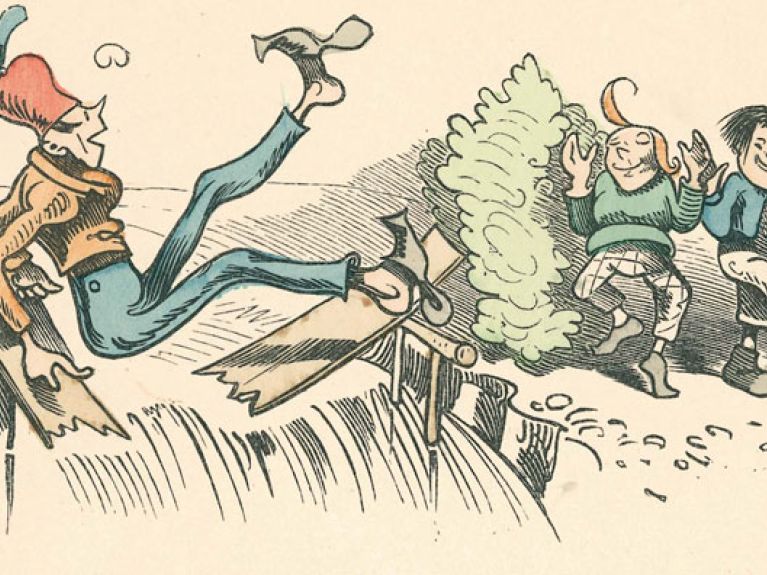150 years of Max and Moritz
It is 150 years since the German illustrator and author Wilhelm Busch invented the boyish pranks of Max and Moritz and created an archetype of the modern comic.

“Ah, how oft we read or hear of / Boys we almost stand in fear of! / For example, take these stories / Of two youths, named Max and Moritz”. These lines mark the beginning of one of the most famous German children’s stories. The two terrible rascals were invented 150 years ago by the German artist Wilhelm Busch, who was one the most influential humourists and graphic artists in the 19th century.
Laughs and shudders
In this Story of Seven Boyish Pranks, the two lads play tricks on the people in their village: widow Tibbets, Master Lämpel the village schoolteacher, Böck the tailor, the baker, the farmer and Uncle Fritz. The pair of rascals lure Widow Tibbets’ hens into a deadly trap and later steal the roasted chickens from the pan. They trick Böck the tailor into crossing a bridge that they have sawn through, and they fill the village schoolteacher’s meerschaum pipe with gunpowder. Wilhelm Busch’s black-humoured satirical verses ridicule the characteristics of certain individual types, such as small-minded philistines. Yet the punishments awaiting the terrible two are draconian. After they have fallen into his trough of dough, the baker pops them into the oven. But they survive the ordeal and nibble their way out of their crispy bread coverings. In their final trick the farmer discovers them slitting open his sacks of corn. He then takes Max and Moritz in a sack to the miller and has them ground into coarse-grained feed for his ducks to eat. In the end all of the village victims are satisfied with this drastic punishment.
Max and Moritz – a Story of Seven Boyish Pranks is a fascinating mix of laughs and shudders. So not surprisingly, educationalists in the Bismarck era reproved the book as frivolous and harmful for young people. But this did not influence its popularity: in the 19th century the book was translated into ten languages, including Japanese in 1887. Meanwhile, there are now almost 300 different translations into dialects and languages, including Latin and Ancient Greek. It is unclear whether it was a prank or a simple error to give 4 April 1865 as the original publishing date of Max and Moritz. Whatever the case, this was the date cited for many years in Wikipedia, and the anniversary was still celebrated this spring in parts of Germany. But in actual fact Wilhelm Busch did not transfer his drawings to the woodcut blocks until August 1865. And Max and Moritz was finally published in October 1865.
Although the pictures and the words are clearly separated in Wilhelm Busch’s story, it is easy to imagine especially the fast-paced scenes from Max and Moritz in present-day comics. As an exhibition at The Wilhelm Busch Museum in Hanover showed in spring 2015, modern pictorial narratives would probably look quite different today without the influence of Wilhelm Busch.
